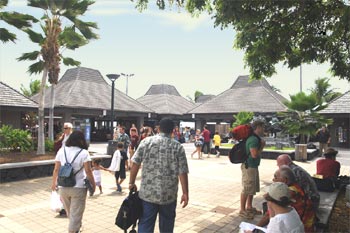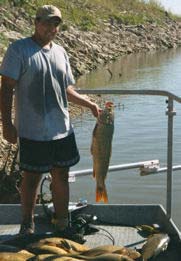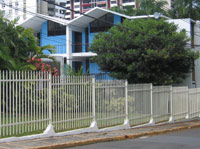About the author: Lina Younes has been working for EPA since 2002 and chairs EPA’s Multilingual Communications Task Force. Prior to joining EPA, she was the Washington bureau chief for two Puerto Rican newspapers and she has worked for several government agencies.
Editor’s note: like all our bloggers, and as stated on the “about” page, Lina is expressing her own opinion, not that of EPA in general.
Lea la versión en español a continuación de esta entrada en inglés.
Some links exit EPA or have Spanish content.
When my friend Jeff M. came back from Hawaii, he mentioned the Hawaiian-Puerto Rican controversy over the tiny Puerto Rican frog, the coquí-the Eleutherodactylus coquí.
The controversy or “national conflict” depending if you ask a Puerto Rican, made front page headlines several years ago when Puerto Rico got wind of Hawaii’s efforts to eradicate these innocent Puerto Rican frogs. How did they travel thousands of miles across the oceans? Apparently some innocent coquís got on a plant shipment from the tropical paradise in the Caribbean to a similar paradise thousands of miles away in the Pacific. Needless to say, in that tropical setting without any indigenous predators, these Puerto Rican coquis have multiplied abundantly!
 These small frogs are known for their melodious nocturnal sounds in Puerto Rico. They have been the inspiration for numerous songs, stories, and poetry. These small amphibians have become an unofficial symbol of Puerto Rico. In fact, I just read a newspaper article in Puerto Rico, that the Sierra Club-PR and the University of Puerto Rico hosted an Earth Day event to promote the defense of the coquí.
These small frogs are known for their melodious nocturnal sounds in Puerto Rico. They have been the inspiration for numerous songs, stories, and poetry. These small amphibians have become an unofficial symbol of Puerto Rico. In fact, I just read a newspaper article in Puerto Rico, that the Sierra Club-PR and the University of Puerto Rico hosted an Earth Day event to promote the defense of the coquí.
Yet, the coquís-named after their musical chirping-cokée, cokée–have not received a warm aloha from our fellow U.S. citizens in Hawaii.
In fact, what is music to the ears of many Puerto Ricans became more than a amphibian cacophony over in the Pacific. In Hawaii, the coquí chants have been compared to the noise pollution caused by lawn mowers! That’s hard for me to conceptualize, given the fond memories of listening to the coquís at nighttime. I remember many a rainy night falling asleep to the symphony of these harmless creatures. They are so small and defenseless! But for the residents of the state of Hawaii, the Puerto Rican coquís are doomed for complete eradication and some of the methods are not benign at all
It’s true that the Puerto Rican coquí has become an invasive species in Hawaii, yet I still don’t see how coquís challenge Hawaiian wildlife. I still cannot understand why their chants are not music to the ears of the inhabitants of this Island State. Sad to say, it all boils down to one man’s friend is another man’s foe.
Nonetheless-please save the Puerto Rican coquí.
(UPDATE 7/15/2008 - see also Post-Hawaii Musings)
¡Qué viva el coquí!
Sobre la autor: Lina M. F. Younes ha trabajado en la EPA desde el 2002 y está a cargo del Grupo de Trabajo sobre Comunicaciones Multilingües. Como periodista, dirigió la oficina en Washington de dos periódicos puertorriqueños y ha laborado en varias agencias gubernamentales.
Cuando mi amigo Jeff M. regresó de Hawaí, mencionó la controversia entre Hawaí-Puerto Rico sobre la pequeña ranita puertorriqueña, el coquí-Eleutherodactylus coquí.
Esta controversia o “conflicto nacional” si le pregunta a un puertorriqueño, fue motivo de titulares de primera plana hace varios años atrás cuando Puerto Rico se enteró de los esfuerzos hawaianos por erradicar estos pequeños anfibios. ¿Cómo viajaron miles de millas por los océanos? Aparentemente unos inocentes coquíes estaban en un cargamento de plantas que viajaron del paraíso tropical en el Caribe a otro paraíso semejante miles de millas de distancia en el Pacífico. ¡Demás está decir que en ese entorno tropical sin enemigo autóctono en Hawaí, estos coquíes se multiplicaron abundantemente!
 Estos pequeños anfibios se caracterizan por los sonidos nocturnos en Puerto Rico. Han servido de inspiración a numerosas canciones, cuentos, y poesías . Estos pequeños anfibios se han convertido en un símbolo extraoficial de Puerto Rico. De hecho, acabo de leer un artículo de periódico anunciando que el Sierra Club-PR y la Universidad de Puerto Rico auspiciaron un evento del Día del Planeta Tierra para promover la defensa del coquí.
Estos pequeños anfibios se caracterizan por los sonidos nocturnos en Puerto Rico. Han servido de inspiración a numerosas canciones, cuentos, y poesías . Estos pequeños anfibios se han convertido en un símbolo extraoficial de Puerto Rico. De hecho, acabo de leer un artículo de periódico anunciando que el Sierra Club-PR y la Universidad de Puerto Rico auspiciaron un evento del Día del Planeta Tierra para promover la defensa del coquí.
Sin embargo, los coquíes-conocidos por su melodioso cantar-coquí, coquí-no han recibido un caluroso aloha de sus conciudadanos estadounidenses en Hawaí.
De hecho, lo que es música para los oídos de muchos puertorriqueños se convirtió en una cacofonía anfibia allá en el Pacífico. ¡En Hawaí, el cantar del coquí ha sido comparado a la contaminación de ruido ocasionado por las cortadoras de césped! Me es difícil conceptualizarlo dado los gratos recuerdos de escuchar a los coquíes al anochecer. Recuerdo muchas noches lluviosas quedarme dormida con la sinfonía de estas criaturas inofensivas. ¡Son pequeñas e indefensas! Pero para los residentes del estado de Hawaí, los coquíes puertorriqueños están condenados a erradicación completa y algunos de los métodos no son nada de benignos.
Es cierto que el coquí puertorriqueño se ha convertido en una especie invasora en Hawaí, pero todavía no veo cómo los coquíes amenazan la vida silvestre hawaiana. Tampoco entiendo el por qué su cantar no es música para los oídos de los habitantes de este estado isleño. Lamento decir, que la controversia se limita al hecho de que la criatura que es amiga para unos resulta enemiga de otros.
Independientemente de la clasificación-ayuden a salvar al coquí puertorriqueño.


 The other thing I wanted to mention is the coqui frog. You may remember
The other thing I wanted to mention is the coqui frog. You may remember  As comical as the spectacle of jumping fish may be, invasive species are a serious threat. A plant may look pretty and an animal may seem cute, yet they may wreak devastating damage when introduced into a non-native setting. In 1884 a single Australian released twenty-four European rabbits on his property for hunting purposes. Within ten years those 24 had turned into over 2 million, and started the delicate ecology of Australia into a downward spiral causing hundreds of millions of dollars of damage each year and bringing a $30,000 fine for anyone found harboring their own
As comical as the spectacle of jumping fish may be, invasive species are a serious threat. A plant may look pretty and an animal may seem cute, yet they may wreak devastating damage when introduced into a non-native setting. In 1884 a single Australian released twenty-four European rabbits on his property for hunting purposes. Within ten years those 24 had turned into over 2 million, and started the delicate ecology of Australia into a downward spiral causing hundreds of millions of dollars of damage each year and bringing a $30,000 fine for anyone found harboring their own  When I was the president of the ASJ Science Club more than three decades ago, we were decorating an enormous bulletin board for Earth Day. We also planted a tree, I think it was an oak, in the front garden of the school. Today, 34 years later, the tree still stands-a testimony of what some students interested in sciences did one beautiful spring afternoon.
When I was the president of the ASJ Science Club more than three decades ago, we were decorating an enormous bulletin board for Earth Day. We also planted a tree, I think it was an oak, in the front garden of the school. Today, 34 years later, the tree still stands-a testimony of what some students interested in sciences did one beautiful spring afternoon.